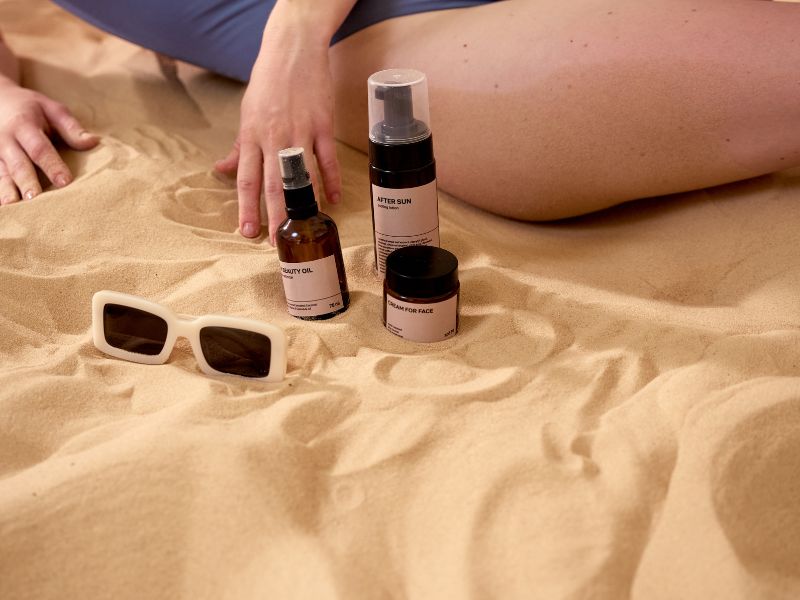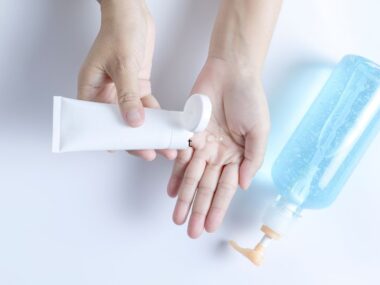Sunscreen is essential in protecting our skin from harmful UV radiation, which can lead to sunburn, premature aging, and skin cancer. However, despite its many benefits, some users report that sunscreen causes acne, leading to clogged pores and breakouts. This article explores whether sunscreen can indeed cause acne, what might be contributing to this skin reaction, and how to select sunscreens that minimize the risk of breakouts.
Can Sunscreen Cause Acne? The Science Behind Breakouts
The relationship between sunscreen and acne is complex and depends on various factors, including sunscreen formulation, skin type, and the ingredients in the product. Acne breakouts are generally triggered by a combination of excess oil, bacteria, clogged pores, and inflammation. For some individuals, sunscreen can exacerbate these conditions, but it’s essential to understand why this happens.
Comedogenic Ingredients in Sunscreen
One of the leading causes of sunscreen-induced acne is the presence of comedogenic ingredients, which can clog pores. Comedogenic substances trap oil and dead skin cells inside pores, leading to blackheads, whiteheads, and other forms of acne. Certain oils, heavy emollients, and silicones used in sunscreens for added moisture or texture can have a comedogenic effect on acne-prone skin.
Common comedogenic ingredients in sunscreen that may cause acne include:
- Coconut oil: While moisturizing, it can be too heavy for oily skin types, leading to clogged pores.
- Isopropyl myristate: Used as a skin-softening agent, it can trap bacteria and oils in pores.
- Lanolin: A moisturizing ingredient derived from wool, it can lead to breakouts for individuals with acne-prone skin.
Even if a sunscreen does not explicitly mention that it is “non-comedogenic,” looking out for the above ingredients and choosing formulations specifically labeled as non-comedogenic can help.
Occlusive Formulas and Acne
Occlusive ingredients are substances that create a barrier on the skin to prevent water loss. While occlusives can be beneficial for dry skin by sealing in moisture, they may not be ideal for oily or acne-prone skin types. Sunscreens with high concentrations of occlusive agents, such as petroleum-based ingredients, mineral oils, and certain silicones, may create an environment where bacteria and oil get trapped in the skin, leading to breakouts.
Popular occlusive agents that could lead to breakouts include:
- Petrolatum: Commonly used for its moisturizing properties, it can trap sweat and oil.
- Mineral oil: Effective at preventing moisture loss, but it may clog pores in certain skin types.
- Dimethicone: A silicone-based compound used to give sunscreen a silky texture, it can sometimes lead to clogged pores.
The Role of Sunscreen Filters: Chemical vs. Mineral
Another factor that may contribute to acne is the type of UV filters used in sunscreen. Sunscreens are typically formulated with either chemical or mineral UV filters. While both types offer sun protection, they function differently on the skin and can impact acne development in unique ways.
- Chemical Sunscreens: Chemical sunscreens contain ingredients like avobenzone, oxybenzone, and octinoxate, which absorb UV radiation and transform it into heat, releasing it from the skin. Chemical sunscreens can sometimes irritate sensitive or acne-prone skin, leading to inflammation, increased oil production, and ultimately, acne. Additionally, chemical filters tend to penetrate the skin, which may trigger irritation in individuals with sensitive skin types.
- Mineral (Physical) Sunscreens: Mineral sunscreens use ingredients like zinc oxide and titanium dioxide to reflect UV rays away from the skin. Although generally regarded as gentler and suitable for sensitive skin, mineral sunscreens can still cause acne in some people. For instance, thick formulations of mineral sunscreen can be comedogenic due to their physical nature and tendency to leave a layer on the skin’s surface. Zinc oxide, while known for its anti-inflammatory properties, can occasionally clog pores when used in dense, occlusive formulas.
Skin Type and Sunscreen Suitability
Different skin types react differently to sunscreens. The likelihood of experiencing acne from sunscreen may be higher for certain skin types, particularly oily and acne-prone skin. Here’s how different skin types can respond to sunscreen:
- Oily Skin: Oily skin is more prone to clogged pores, which can result in acne breakouts. Sunscreens with a heavy, greasy consistency may exacerbate this issue, leading to increased sebum production and acne. Individuals with oily skin should look for lightweight, oil-free, and mattifying sunscreens.
- Sensitive Skin: Sensitive skin can be reactive to certain ingredients, especially those found in chemical sunscreens. When sensitive skin reacts to these ingredients, it may produce an inflammatory response that results in breakouts, irritation, and redness.
- Combination Skin: Combination skin may experience breakouts in areas where the skin is oily (typically the T-zone), while drier areas may not react as much. People with combination skin may benefit from applying different types of sunscreen to different areas of the face.
Fragrances and Preservatives in Sunscreen
Fragrances and preservatives are added to sunscreens to enhance scent and increase shelf life. However, these additives can be problematic for sensitive or acne-prone skin. Fragrances, in particular, can trigger allergic reactions and inflammation, leading to breakouts. Preservatives, especially parabens and formaldehyde releasers, may cause a similar reaction in some individuals, leading to acne and irritation.
To minimize the risk of breakouts, it’s wise to select sunscreens that are labeled “fragrance-free” and contain minimal preservatives.
Sun Protection Ingredients and Acne: Is It Worth the Trade-Off?
While it’s true that some sunscreens can cause breakouts, skipping sunscreen is not a healthy option. Consistent sunscreen use is crucial to prevent skin damage, premature aging, and, more seriously, skin cancer. The benefits of using sunscreen far outweigh the potential risk of acne, and there are ways to mitigate these risks.
A few adjustments can make sunscreen more compatible with acne-prone skin:
- Patch testing: Before using a new sunscreen, apply it to a small skin area and monitor for any reactions.
- Lightweight formulations: Opting for gel-based or water-based sunscreens can reduce the risk of clogged pores.
- Non-comedogenic products: These are formulated specifically to prevent clogged pores and are often less likely to cause acne.
Is Acne a Temporary Side Effect of Using Sunscreen?
In some cases, acne breakouts related to sunscreen use may be temporary. When transitioning to a new skincare product, the skin may go through an adjustment period. This phase, known as “purging,” occurs when the product speeds up skin cell turnover, bringing congestion to the surface. Purging typically lasts for a few weeks, after which the skin may clear up. However, if breakouts persist beyond six weeks or worsen, the sunscreen may not be suitable for your skin type.
The Importance of Proper Sunscreen Removal
Even the best sunscreen can cause breakouts if it’s not removed correctly. Sunscreen, especially water-resistant formulas, can adhere to the skin and clog pores if not thoroughly washed off at the end of the day. To ensure all sunscreen residue is removed, double cleansing is often recommended:
- Oil-based Cleanser: Oil-based cleansers can dissolve and break down sunscreen, helping to lift it off the skin without excessive rubbing.
- Water-based Cleanser: Following up with a gentle, water-based cleanser helps remove any remaining residue and ensures a deep clean.
Proper sunscreen removal is especially important for people with acne-prone skin, as residual sunscreen can contribute to clogged pores and acne development.
Alternatives to Traditional Sunscreen for Acne-Prone Skin
For those who find even non-comedogenic sunscreens unsuitable, alternative methods of sun protection can help protect the skin without the risk of breakouts. These include:
- Tinted Moisturizers with SPF: Combining moisture and sun protection, tinted SPF products often have lighter formulations and are less likely to clog pores.
- Powder Sunscreens: Powder sunscreens are a great choice for touch-ups throughout the day and can be layered over makeup or regular sunscreen for added protection.
- Mineral Makeup with SPF: Some mineral makeups contain sun-protecting ingredients like zinc oxide, offering mild UV protection and reducing the need for a separate sunscreen.
Conclusion
While sunscreen can cause acne in certain cases, selecting the right type and formula for your skin can minimize the risk. Lightweight, non-comedogenic, and oil-free sunscreens are often better suited for acne-prone skin. Regular cleansing routines and careful ingredient selection also play crucial roles in preventing sunscreen-induced breakouts.
By understanding how different ingredients and formulations interact with your skin type, you can enjoy the benefits of sun protection without the worry of acne. Ultimately, prioritizing sun protection is essential for maintaining healthy, youthful skin while making adjustments to minimize acne risks where possible.






